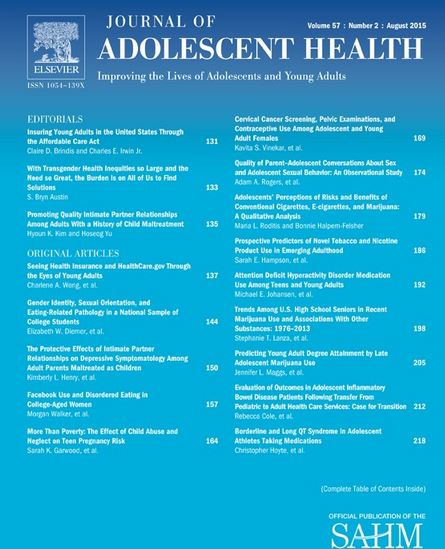
Purpose: Despite increased media and scholarly attention to digital forms of aggression directed toward adolescents by their peers (e.g., cyberbullying), very little research has explored digital aggression directed toward oneself. “Digital self-harm” is the anonymous online posting, sending, or otherwise sharing of hurtful content about oneself. The current study examined the extent of digital self-harm among adolescents.
Methods: Survey data were obtained in 2016 from a nationally representative sample of 5,593 American middle and high school students (12 17 years old). Logistic regression analysis was used to identify correlates of participation in digital self-harm. Qualitative responses were also reviewed to better understand motivations for digital self-harm.
Results: About 6% of students have anonymously posted something online about themselves that was mean. Males were significantly more likely to report participation (7.1% compared to 5.3%). Several statistically significant correlates of involvement in digital self-harm were identified, including sexual orientation, experience with school bullying and cyberbullying, drug use, participation in various forms of adolescent deviance, and depressive symptoms.
Conclusions: Digital self-harm is a new problem that demands additional scholarly attention. A deeper inquiry as to the motivations behind this behavior, and how it correlates to offline self-harm and suicidal ideation, can help direct mental health professionals toward informed prevention approaches.
Patchin, J. W. & Hinduja, S. (forthcoming). Digital self-harm among adolescents. Forthcoming in the Journal of Adolescent Health.
If you are unable to access the article at the link above, please email us and we will send you a copy.







